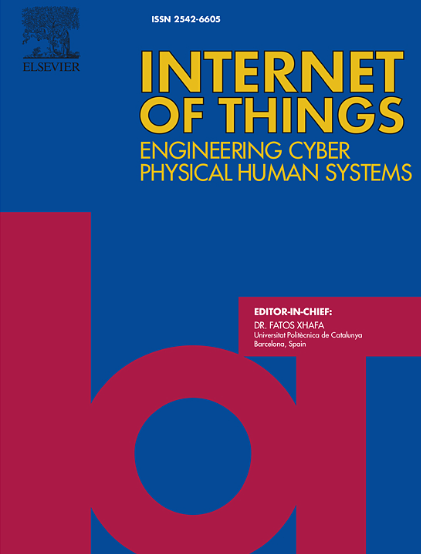Enhancing the performance of Industrial IoT LoRaWAN-enabled federated learning frameworks: A case study
IF 6
3区 计算机科学
Q1 COMPUTER SCIENCE, INFORMATION SYSTEMS
引用次数: 0
Abstract
The ongoing development of Industrial Internet of Things (IIoT) smart systems is transforming industrial maintenance by improving operational efficiency. In this context, anomaly detection within IIoT architectures is crucial for early issue identification in industrial machinery. However, many systems generate vast sensor data while operating in environments with poor accessibility and network coverage, making centralized training impractical. Federated learning (FL) offers a solution by enabling distributed training on local devices, reducing bandwidth usage by transmitting models instead of raw data, and enhancing privacy. Despite these advantages, applying FL in IIoT resource-constrained devices — characterized by limited storage, processing capacity, and high-frequency heterogeneous data — remains challenging. This study showcases FL framework performance enhancement in LoRaWAN-enabled IIoT environments through optimized local machine data management. The improvements explore three key approaches: (1) techniques to manage high-variability, high frequency data from multiple sources via LoRaWAN-enabled prototypes, (2) an adaptive optimization approach addressing industrial machinery’s sensory diversity, and (3) strategies to reduce false alarms by refining the management system to categorize risk levels based on proximity to anomaly detection thresholds. The enhanced framework achieves an F1-score of 97%, TPR of 96%, and TNR of 80%, with the positive class representing normal conditions and the negative class indicating anomalies. Moreover, the false alarm reduction strategy decreases false positives by at least 72%, preventing values near the threshold from being misclassified as high risk anomalies.
增强工业物联网lorawan支持的联邦学习框架的性能:案例研究
工业物联网(IIoT)智能系统的持续发展正在通过提高运营效率来改变工业维护。在这种情况下,工业物联网架构中的异常检测对于工业机械的早期问题识别至关重要。然而,许多系统在可访问性和网络覆盖率差的环境中运行时产生大量传感器数据,使得集中训练不切实际。联邦学习(FL)提供了一种解决方案,它支持在本地设备上进行分布式训练,通过传输模型而不是原始数据来减少带宽使用,并增强隐私。尽管有这些优势,但在工业物联网资源受限设备中应用FL仍然具有挑战性,其特点是存储、处理能力有限,数据异构频率高。本研究通过优化本地机器数据管理,展示了FL框架在支持lorawan的IIoT环境中的性能增强。这些改进探索了三个关键方法:(1)通过支持lorawan的原型管理来自多个来源的高变异性高频数据的技术;(2)解决工业机械感官多样性的自适应优化方法;(3)通过改进管理系统,根据异常检测阈值的接近程度对风险级别进行分类,从而减少误报的策略。增强框架的f1评分为97%,TPR为96%,TNR为80%,阳性分类代表正常情况,阴性分类代表异常情况。此外,误报减少策略将误报减少至少72%,防止接近阈值的值被误分类为高风险异常。
本文章由计算机程序翻译,如有差异,请以英文原文为准。
求助全文
约1分钟内获得全文
求助全文
来源期刊

Internet of Things
Multiple-
CiteScore
3.60
自引率
5.10%
发文量
115
审稿时长
37 days
期刊介绍:
Internet of Things; Engineering Cyber Physical Human Systems is a comprehensive journal encouraging cross collaboration between researchers, engineers and practitioners in the field of IoT & Cyber Physical Human Systems. The journal offers a unique platform to exchange scientific information on the entire breadth of technology, science, and societal applications of the IoT.
The journal will place a high priority on timely publication, and provide a home for high quality.
Furthermore, IOT is interested in publishing topical Special Issues on any aspect of IOT.
 求助内容:
求助内容: 应助结果提醒方式:
应助结果提醒方式:


